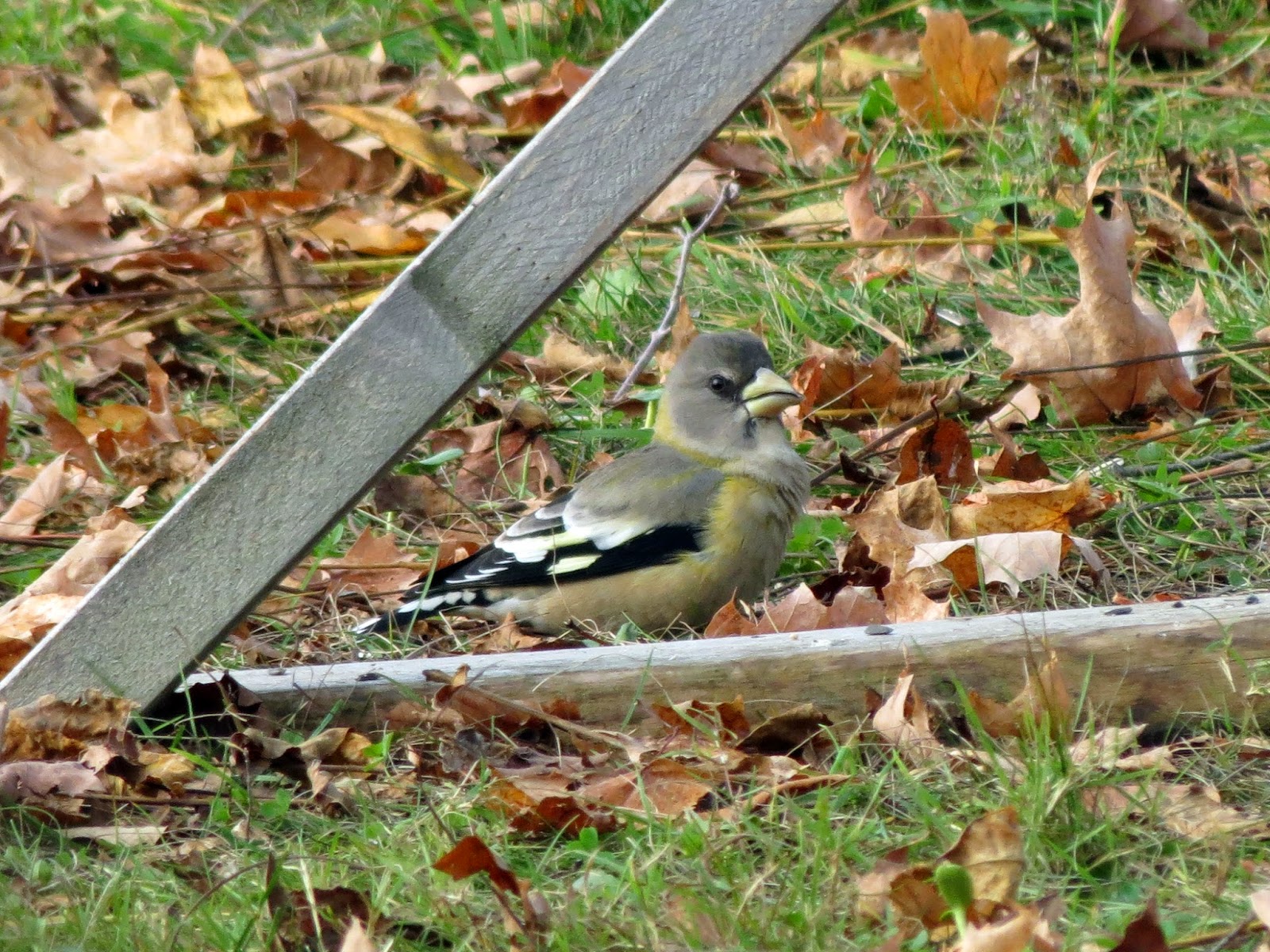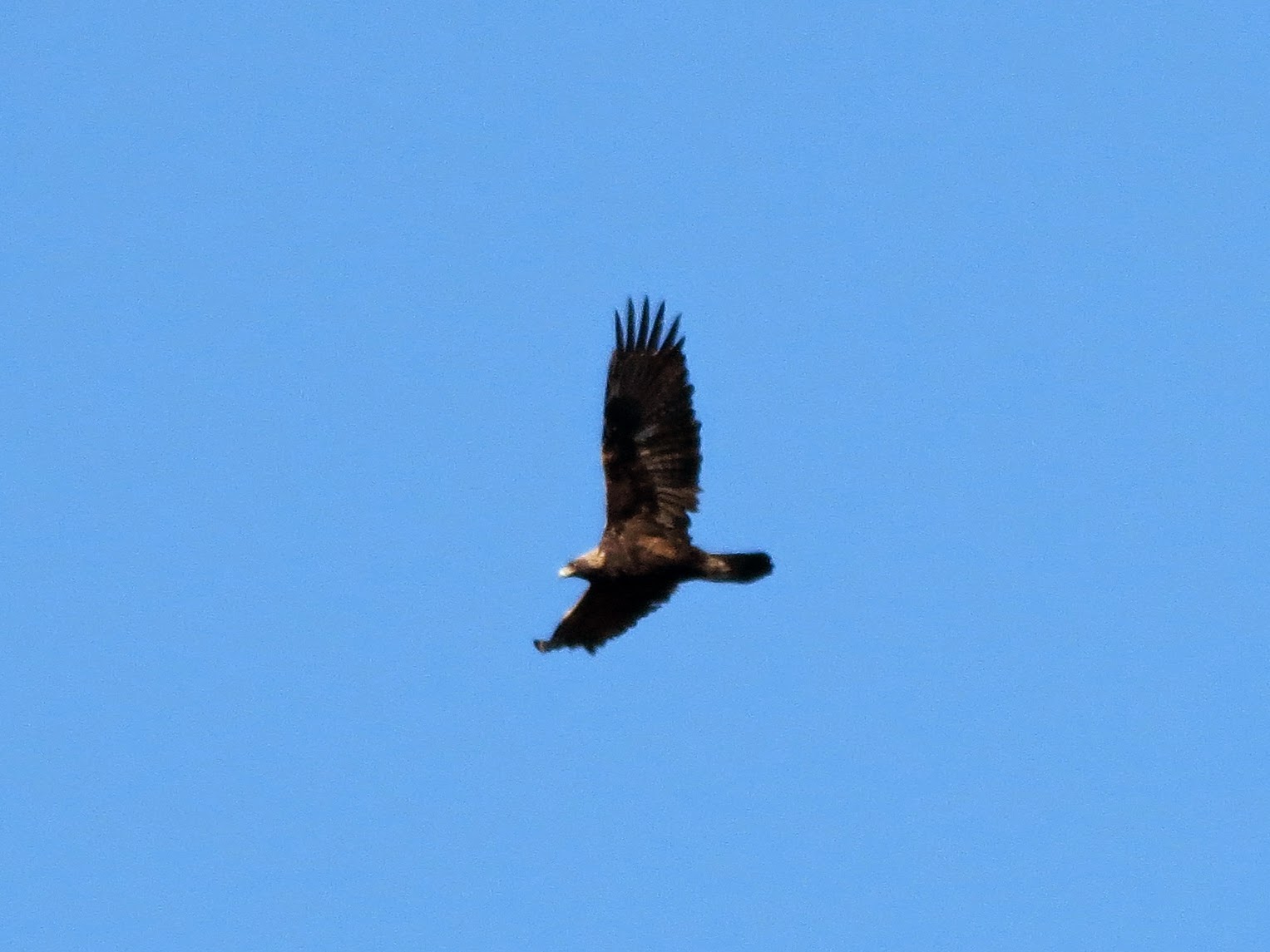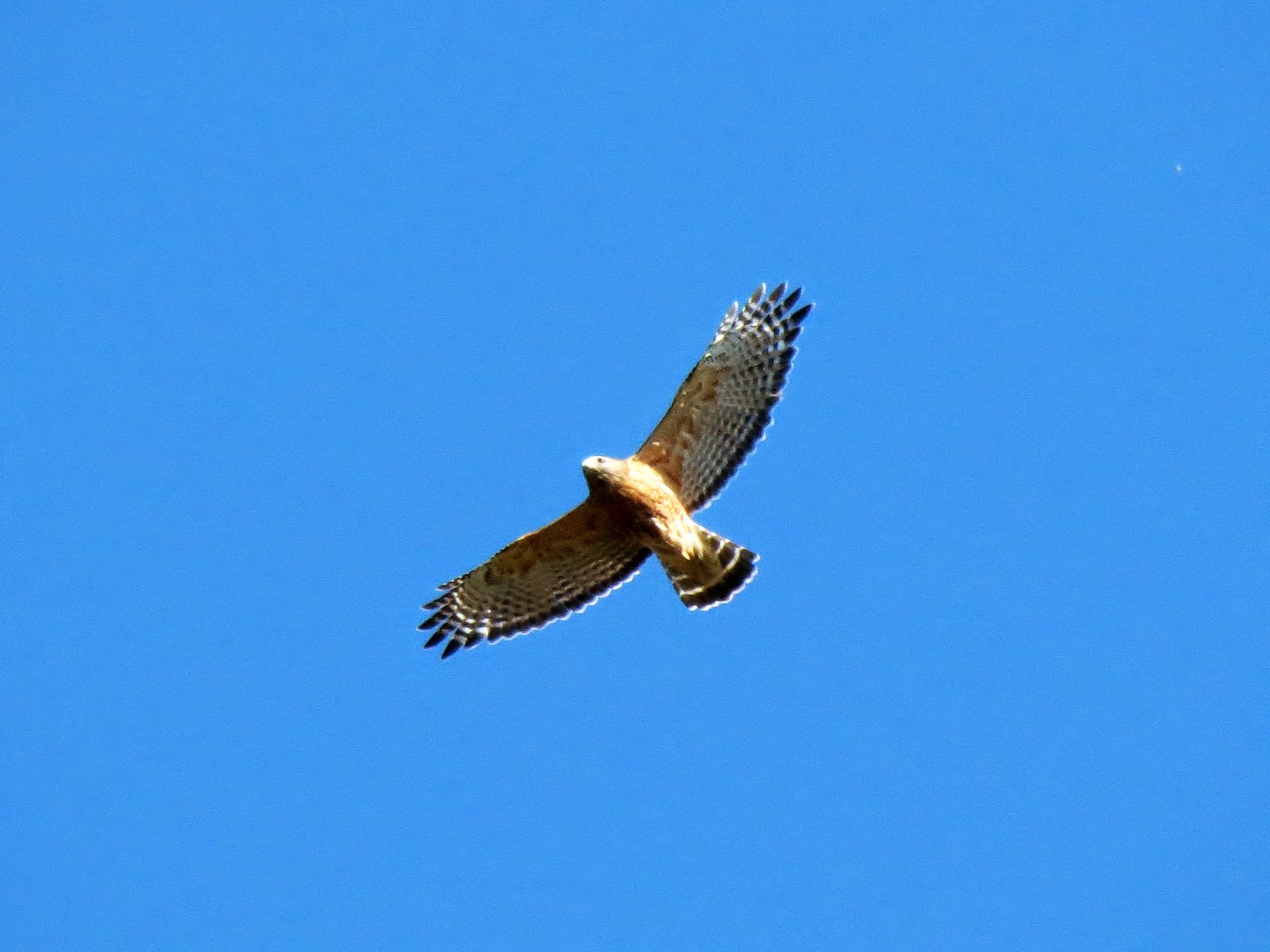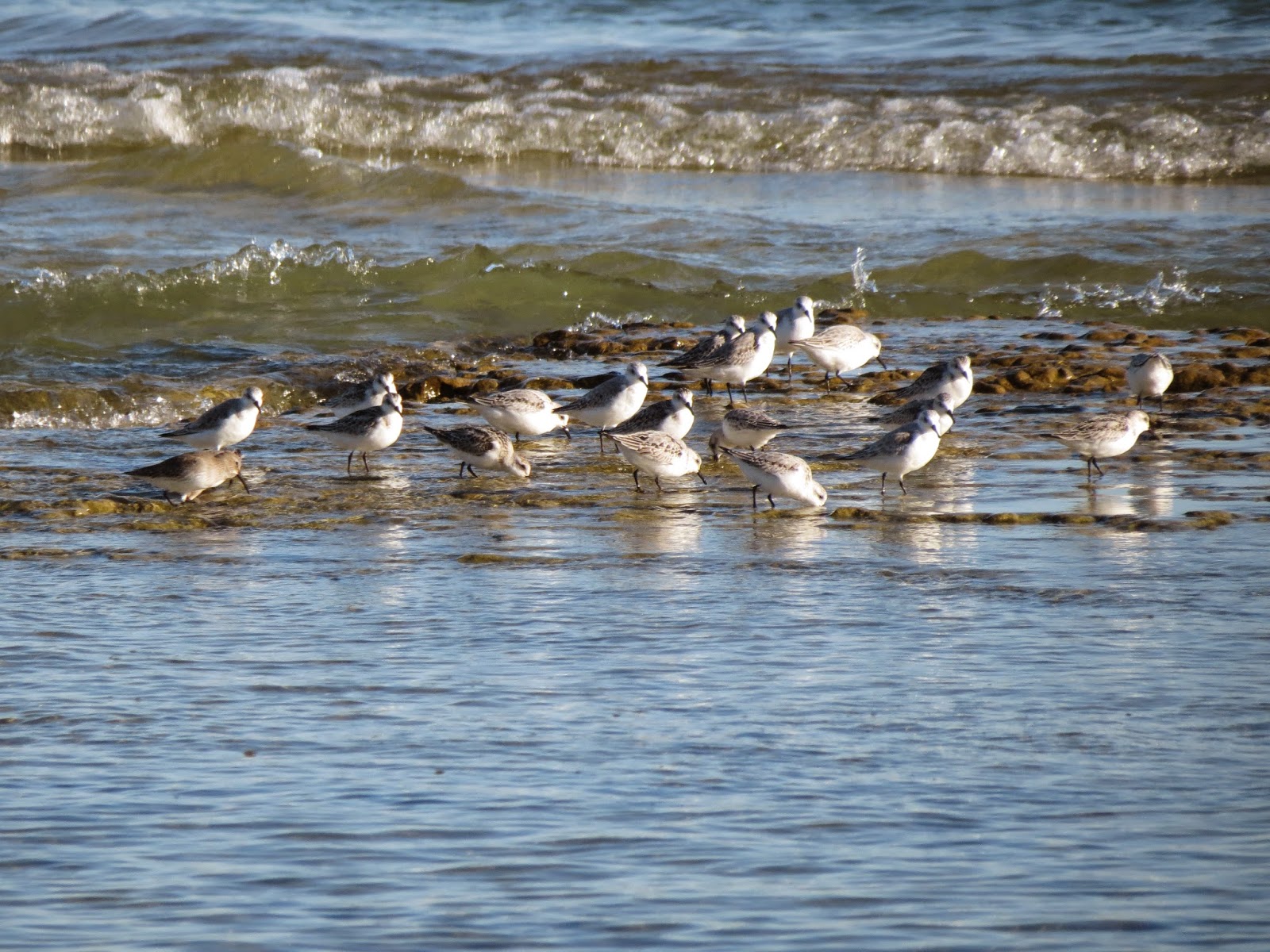Thurs 23rd - Fri 24th October, 2014
OK, they weren't both lifers for me but between birding buddy James Barber and I, we each scored a lifer on consecutive days during a week devoted very much to birding the local area and catching up on late (or if you prefer, early) migration.
The weekend before started well with an OFO trip to Amherst Island, led by Mike Burrell, where the group hooked up with some early winter migrants/visitors including a snowy trio of Snow Goose, Snowy Owl (an individual that forgot to go home last summer) and a handful of Snow Buntings. However, the highlight for many was a small migration of raptors that included almost 100 Turkey Vultures, several Red-tailed Hawks (including a classic 'northern'
abieticola), Sharp-shinned Hawk and bird-of-the-day, an immature Northern Goshawk. No pictures from that day I'm afraid, but this shot of the same Snowy Owl was taken back in September at the same location.
 |
| Snowy Owl - Martin Edwards Reserve, Amherst Island, ON |
So moving forward to Thursday and my lifer. Now it's not such a big deal if you've been living in Canada all your life but when news of 4 Evening Grosbeaks at Mike's feeder came through, I 'knew' the wait was finally over. This species, as with many other seed-eaters, irrupts during years of poor crop further north so it was really just a matter of time before I hooked up with this cracking species. In the same genus as Hawfinch, I knew what I was in for and was not disappointed! With a supporting cast of Pine Siskin, American Goldfinch and Rusty Blackbird, we were provided great views of one of the females at the feeder and slightly more distant views of a couple of males and another female up in one of the trees. The males are quite spectacular - you really should check them out - but here she is...
5%2B-%2BWashburn%2BRoad%2C%2BON.JPG) |
| Evening Grosbeak (female) - Washburn Road, ON |
When we got home, we were pleased to hear that a Golden Eagle had been seen that day at Prince Edward Point, along with plenty of other migrating raptors. There was admittedly a twinge of regret but with winds looking very favourable for the next day (NW), James and I decided we would spend the day at the Bird Observatory and see what the winds would bring.
Even as we were driving to the Point that next morning, we were seeing signs of a potential raptor movement with a handful of Red-tailed Hawks hugging the shoreline. After setting up (we actually brought camping chairs), we sat back and let the action begin. It was relatively slow at first, with a mix of Red-tailed and Red-shouldered Hawks coming through, though until about 10:30 Sharp-shinned Hawks made up the majority of sightings. And then it happened, the first eagle came through at 10:50 - unfortunately it was the more common Bald Eagle but we were ready, and at 10:55 our
first Golden Eagle of the day came through, really low, and James had just bagged his lifer, with a record shot to boot. Ten minutes late, the second bird came through and we both got photos and great looks at this one. And that was it - the flood gates opened and over the next couple of hours we recorded
14 different individuals; on 2 occasions we had a minimum of 4 birds in the air at the same time. We even got to see a couple of birds talon-grappling and spiralling out of the air - amazing. Reviewing our photos later, there could actually have been even more birds...
None of my photos were great, but here are a couple of the highlights.
2%2B-%2BPrince%2BEdward%2BPoint%2C%2BON.JPG) |
| Golden Eagle (imm) - Prince Edward Point, ON |
3%2B-%2BPrince%2BEdward%2BPoint%2C%2BON.JPG) |
| Golden Eagle (imm) - Prince Edward Point, ON |
2%2B-%2BPrince%2BEdward%2BPoint%2C%2BON.JPG) |
| Golden Eagle (sub-adult) - Prince Edward Point, ON |
Here also is one the Red-shouldered Hawks:
6%2B-%2BPrince%2BEdward%2BPoint%2C%2BON.JPG) |
| Red-shouldered Hawk (adult) - Prince Edward Point, ON |
Oh yeah, almost forgot to say we had a flock of 17 Evening Grosbeaks earlier in the morning, followed by a single near the observatory. Weird how that works but I was still glad to have bagged that species at Mike's the day before. So, by 14:00 and chuffed to bits, we 'retired' to the lake with our chairs, lunch, and a cool drink and spent an hour or so lake-watching in the glorious sunshine. Not too much to report, but later on we encountered a nice flock of 23 Sanderling and 2 Dunlin out near the lighthouse.
 |
| Sanderling and Dunlin - Prince Edward Point, ON |
Planning to stay into the evening for owl banding, we were pleasantly surprised to get back to the station and 'dragged' 20 metres down the trail to where a Northern Saw-whet Owl had recently been found roosting. This was a real bonus as we were privileged fantastic views of this diminutive species in late afternoon sunshine, rather than having to accept one hanging upside down in a mist-net or in the hand. Thanks must go to the staff at the station for putting us onto this bird.
 |
| Northern Saw-whet Owl - Prince Edward Point, ON |
All-in-all a grand day and overall a fantastic week.
Till next time,
Mark.
19+-+Prince+Edward+Point,+ON.jpg)



